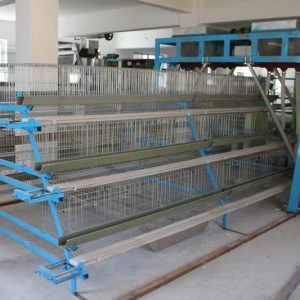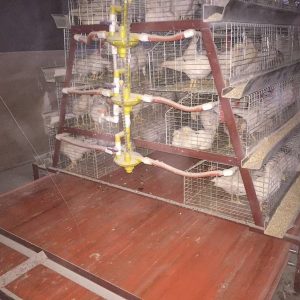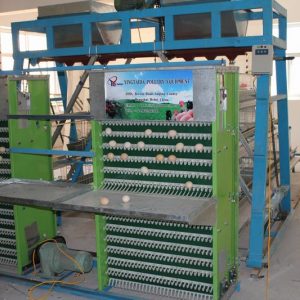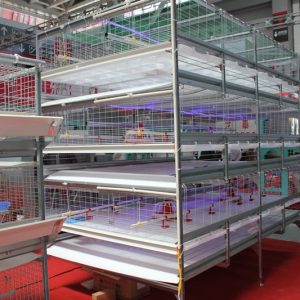
How to breed Hetian chicken?
How to breed Hetian chicken? Hetian chicken breeding must first control the temperature, the chicken house must maintain good ventilation, must exceed the 35 degrees in summer to heat the chicken house. The feeding density should be controlled at 8-15 per square meter. Feeding uses fresh vegetables, corn, and rice to feed. The drinking water should be clean. The male should be castrated artificially in three months, and then continue to feed for three months to be slaughtered.
How to breed Hetian chicken?
Generally speaking, few farmers will hatch eggs by themselves and raise them from an early age. In this case, the feeding cost is very high. Usually buy 1-2 pounds of young chickens, and then slowly raise them.
If you buy bigger chickens, one of the benefits is that the chicken farm has already been vaccinated, so there is no need to vaccinate the chickens yourself, and the risk of breeding will be much less.
Otherwise, most farmers do not know how to vaccinate chickens, which is too much trouble. It is not possible to vaccinate Hetian chickens. It is the same for any chicken. If it is not vaccinated, it will be too fragile.
The benefits of buying larger chickens are very obvious. You only need to feed some corn kernels and millet every day, and then it will forage freely, so that the meat quality will be better if it is raised for a certain period of time.
Hetian chicken breeding technology
1. Chick feeding and management
(1) Preparations before brooding
A. Preparation of brooding room: choose heat preservation and heating method, build brooding facilities and heat preservation facilities, and lay disinfected litter (chaff, chopped straw) on the ground.
B. Pre-heating and temperature testing before the chickens are transported: debug the heat preservation facilities to make the temperature of the brooding room reach the requirements, and the chickens cannot be transported without reaching the prescribed temperature.
C. Prepare enough feed and drinking fountains (1 feed tank and drinking fountain for every 100 chickens)
D. Disinfection: For disinfection methods of brooding rooms and utensils, see the technical specifications for epidemic prevention.
E. Rainy and cold equipment should be prepared in rainy season and cold to prevent chicks from raining and blowing.
F. Select strong chickens and eliminate sick and weak chicks.
(2) Feeding and management of chicks
Usually 0-6 weeks old is the stage of chicks, which is called brooding period.
(1) Temperature management: Temperature is the primary condition for brooding. Even in summer, due to the large temperature difference between day and night, heat preservation is also required. The quality of heat preservation is the key to the success of brooding, because the newborn chicks have poor ability to adjust the body temperature and are particularly sensitive to temperature changes. If the temperature of the brood is too low, the chicks will pile up, scream, close their eyes, tremble because of the fear of cold. Feeding and exercise, when severe, squeeze each other to death, and some colds, diarrhea and even death; high temperature affects normal metabolism, decreased appetite, increased drinking water, weak constitution, slow development, and is susceptible to respiratory disease and pecking Addiction, etc .; when the temperature is appropriate, the chickens are lively, spiritual, quiet, evenly distributed in the brooding room. Therefore, the temperature must be suitable. The general brooding temperature is 1-2 days old 35-36 ℃, 3-7 days old 35-32 ℃, the second week 32-28 ℃, the third week 29-27 ℃, the fourth week 27-25 ℃, de-heat after one month of age, keep the room temperature around 22 ℃. The thermometer for measuring temperature should be hung at the same height as the chicken’s back.
(2) Temperature management: the body moisture content of the same-shell chicks is more than 70%. Chicks need proper humidity for growth and development. The humidity is too low, the water in the chicks is lost too much, the yolk in the abdomen is absorbed poorly, the fluff is dry and brittle, the chicks are turbulent, and they are susceptible to respiratory diseases. For this, the humidity can be adjusted by the steam from the indoor boiling water. Excessive humidity is conducive to the propagation of germs and eggs. Chicks are susceptible to gastrointestinal diseases, aspergillosis, coccidiosis, etc. In this regard, attention should be paid to ventilation, frequent replacement of litter, and water leakage prevention. In summer when the temperature and humidity are high, the heat in the chicks is not easy to dissipate, which is manifested by a decrease in appetite and slow growth. For this, cooling measures should be taken, and attention should be paid to ventilation, ventilation or density reduction. The humidity can be measured with a dry hygrometer and the appropriate relative humidity in the brooding room: 65-70% at 0-2 weeks old, 55-60% after 3 weeks old.
(3) Density: The density of the chicken flock directly affects the chicken’s feeding, activities, drinking water, growth and development and health. If the density is too large, it will cause damp litter, air pollution, poor feather growth, prone to peck addiction and parasitic diseases, and a high mortality rate; if the density is too small, the house utilization rate is low, and the cost is high. Therefore, the appropriate density should be arranged according to factors such as the area of the chicken house, the season and scale of brooding, the age of the chicks, etc. Usually 50 birds per square meter for 1-7 days old, 35-40 for 8-14 days old, 15- Twenty-five chickens at 28 days old, depending on the size of the chicken, 8-15 per square meter.



